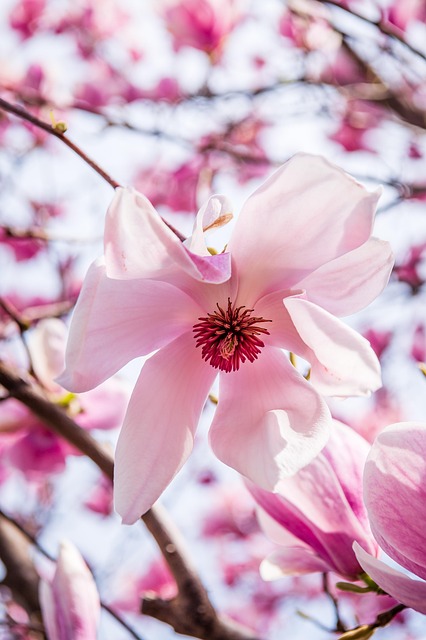Spring plant refresh involves health checks, tailored fertilization, and proactive pest/disease prevention to ensure robust growth and garden resilience. Protect plants from cold with mulch, deep watering, and organic matter incorporation for optimal post-winter health and vitality.
In the ever-changing seasons, pest and disease prevention is an essential part of maintaining a vibrant garden. This comprehensive guide navigates the tailored approach needed for each season’s unique challenges. From spring’s vital plant refresh through summer’s pest identification to autumn’s disease prevention and winter’s cold-weather care, discover expert tips for ensuring your plants thrive year-round. Embrace a seasonal strategy for optimal garden health.
Spring Preparation: Plant Health Checks and Fertilization
As winter’s chill fades, spring signals a fresh start for gardens and landscapes. This is the perfect time to conduct thorough plant health checks, addressing any issues before they escalate during the warmer months. A professional inspection can identify potential pests, diseases, or nutrient deficiencies that may have accumulated over the colder season.
Spring also marks an ideal period for fertilization, promoting robust growth and enhancing overall plant resilience. By selecting the right nutrients tailored to individual plants’ needs, you support a vibrant spring plant refresh. This proactive approach ensures your garden thrives, fostering a healthy environment that is better equipped to resist pests and diseases throughout the season.
Summer Pests: Identifying and Treating Common Invertebrates
During the summer, as plants enjoy a burst of growth and vitality after the Spring plant refresh, they become more vulnerable to certain pests. Invertebrates like aphids, spider mites, and whiteflies are common culprits, attracted by the lush foliage and abundant nectar. To identify these intruders, look for distorted leaves, webbing, or sticky substances on your plants.
Treating these pests requires a multi-pronged approach. Regularly inspect your plants and remove infested parts by hand. Implement natural predators like ladybugs or lacewings, and use neem oil or insecticidal soap for targeted treatments. Preventative measures such as keeping gardens clean, eliminating standing water, and maintaining proper air circulation can also significantly reduce summer pest problems during your spring plant refresh.
Autumn Diseases: Preventative Measures for Shrub and Tree Health
As autumn arrives, it’s crucial to shift your pest and disease prevention strategies for optimal shrub and tree health during this transitional season. Before winter sets in, take proactive measures to safeguard your greenery against common autumnal ailments. One effective step is cleaning up fallen leaves promptly; these can harbor pests and diseases that spread to healthy plants. Consider composting them away from your garden or burning them to prevent reintroduction of pathogens.
Additionally, trimming and pruning trees and shrubs during late autumn or early spring plant refresh helps improve air circulation, reducing moisture levels that foster fungal growth. Apply fungicides preventively if historical data suggests a high risk for specific diseases in your area. Remember, regular monitoring coupled with these preventative measures will go a long way in ensuring your garden’s resilience against seasonal threats, setting the stage for healthy growth come spring.
Winter Protection: Cold-Weather Care for Plants and Soil
As winter sets in, it’s crucial to prepare your plants and soil for the cold weather ahead. A thorough spring plant refresh is a great way to ensure your garden thrives once the snow melts. Start by protecting vulnerable plants with insulation like mulch or frost blankets. These barriers create a protective layer, preserving roots and keeping essential moisture locked in the soil.
Don’t forget to water deeply before the ground freezes solid. This provides plants with a reservoir of water they can draw from during dry spells. Additionally, consider incorporating organic matter into your soil to boost its fertility and structure, making it better equipped to retain humidity and prevent erosion caused by winter storms.
By implementing tailored pest and disease prevention strategies for each season, from spring’s plant refresh and summer pest management to autumn disease precautions and winter protection, you can ensure your garden maintains optimal health year-round. These seasonal approaches, discussed in detail throughout this article, empower gardeners with the knowledge to proactively care for their plants, fostering a vibrant and resilient landscape.
